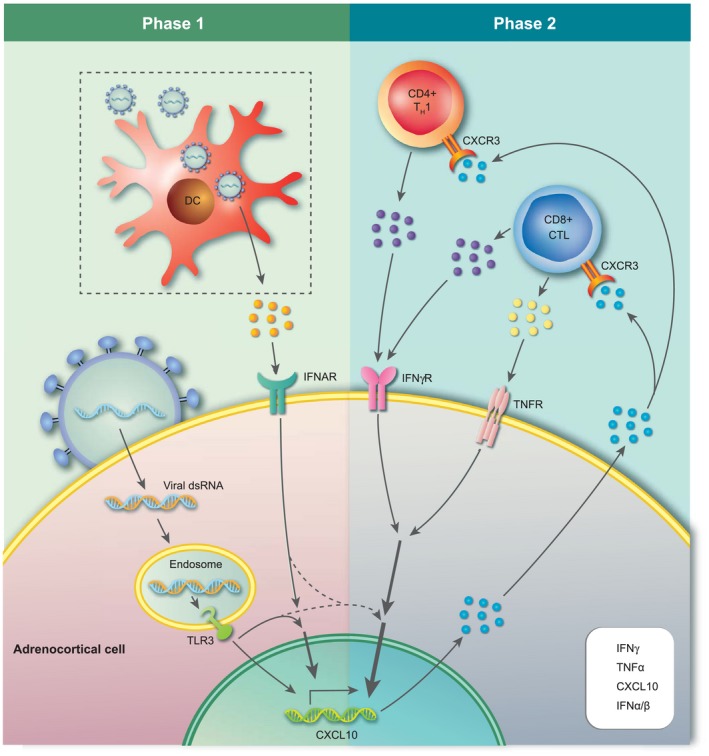Figure 2.

Hypothetical recruitment of autoreactive T cells to the adrenal cortex triggered by viral infection. Phase 1: a viral infection of the adrenal cortex may serve as the initial trigger of adrenalitis in AAD. Recognition of viral dsRNA by endosomal Toll‐like receptor 3 (TLR‐3) along with the action of locally produced type I interferons (IFNs) [here by virus‐infected dendritic cells (DCs)], stimulates the production of C‐X‐C motif chemokine 10 (CXCL10) by adrenocortical cells. Phase 2: CXCL10 promotes the recruitment of CXCR3‐expressing activated autoreactive CD4+ and CD8+ T cells (e.g. 21OH‐specific) that produce proinflammatory cytokines. These T cells are activated and expanded in a local draining lymph node or in secondary lymphoid organs elsewhere in the body (not shown in the figure). This event could be related to the virus infection in phase 1, with DCs and other antigen‐presenting cells (APCs) carrying and presenting adrenal components (including 21OH peptides) under proinflammatory conditions, or it could be a result of an earlier infection at a different location than the adrenal cortex (e.g. through molecular mimicry). T cell‐derived IFN‐γ and tumour necrosis factor (TNF)‐α intensify CXCL10 production by adrenocortical cells, leading to a vicious cycle that could strongly expand the mononuclear infiltrate and sustain inflammation of the adrenal cortex. For illustrative reasons, CXCL9 is not included in the figure, but may play an accompanying role in the recruitment of autoaggressive T cells in phase 2. [Colour figure can be viewed at wileyonlinelibrary.com]
